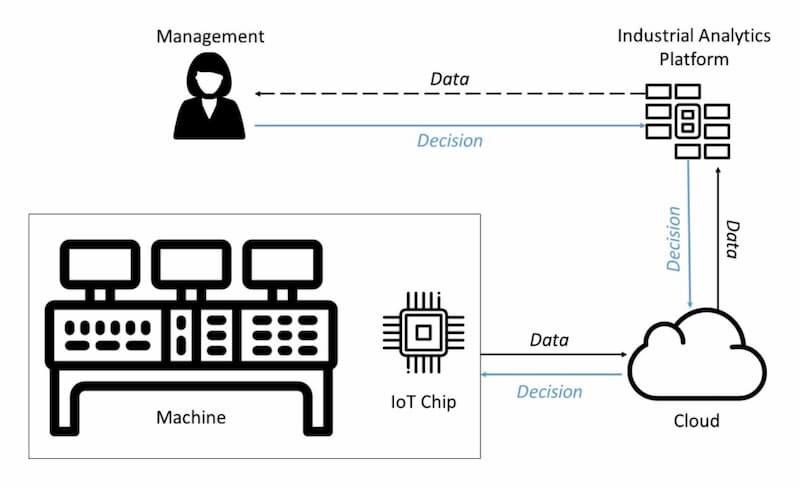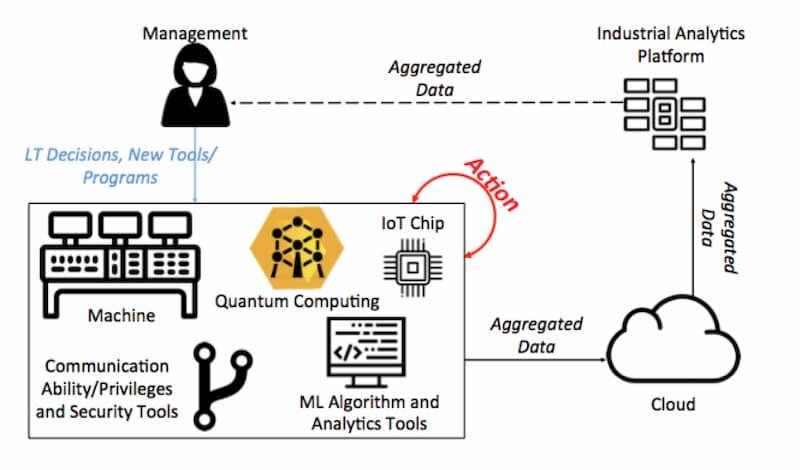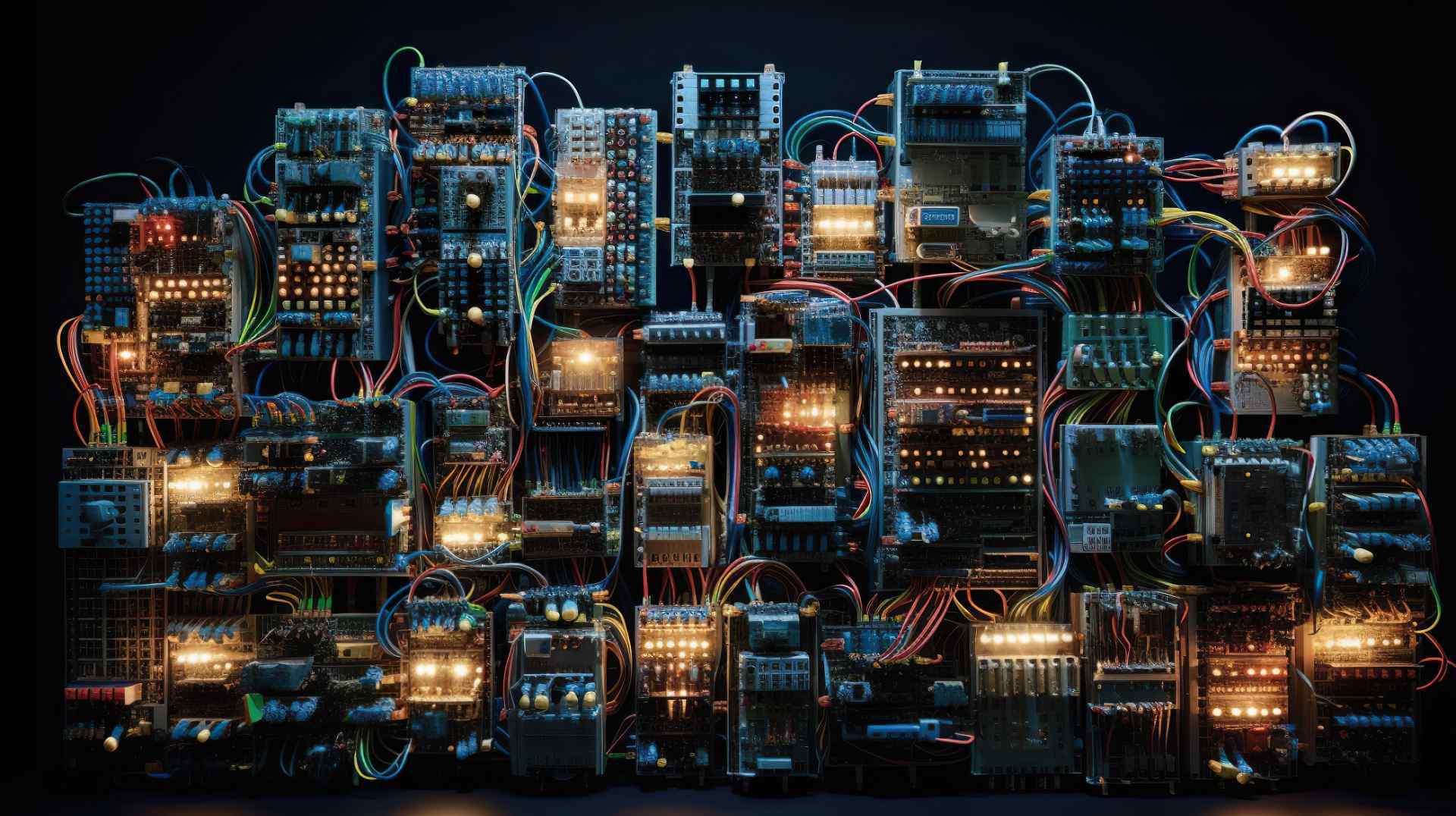Moving to the Edge for Speed and Autonomy
Making Decisions at the Edge
WHAT IS EDGE COMPUTING?
How quickly what’s new becomes commonplace. Cloud computing has been one of the biggest conduits for innovation over the past 10 years and will remain an important part of the computing infrastructure for the foreseeable future. But as we enter into the age of the internet of things (IoT) and as data creation continues to expand at a rapid pace, the cloud often does not provide the speed necessary to deliver results effectively.
“Edge computing” or “fog computing” is a method of optimizing cloud computing systems by performing data processing at the edge of the network, near the source of the data (Wikipedia).” Edge computing processes data on-site with the data being created, instead of sending the information to the cloud. The necessity and opportunities for edge computing are extensive and highly valuable. In addition to improvements in existing legacy industries, such as oil & gas and industrial manufacturing, edge computing is necessary for some of the next big sectors, such as autonomous vehicles and drones.
CURRENT PROCESS
A vast amount of computing is already being done on the edge, but much of the work being done is simplistic, resulting in problems similar to those experienced in API business models. Current IoT devices are “dumb loggers”, meaning the chips monitor simple aspects such as temperature, weight, vibrations, and power. The data is sent through the cloud, where it is processed and interpreted with data analytics tools by a human counterpart. Any changes, repairs, or insights take time and are made following analysis by employees. While relatively effective and an improvement over prior methods, this process can be improved. In fact, per a recent study by Cisco:
- 74 percent of companies said that their current IoT initiatives are unsuccessful.
- 60 percent said that their IoT initiatives look good on paper but prove much more difficult to implement than expected.
- 61 percent said they’ve barely scratched the surface of what IoT can do for their business.
- 73 percent said data from their IoT initiatives is improving their business.
IoT has caught the attention of industrial companies, but hasn’t yet reached the potential of what it can do.

The Future
If the devices on an edge could process the data and make decisions without human involvement or latency, the benefits would be enormous. Imagine if 1) a machine would recognize it was not getting enough power, so it 2) requested and pulled info from a sensor in the generator, then 3) diagnosed that the generator was not sending power, and 4) the system would send a direct repair request to the appropriate party. All within a few seconds. Furthermore, if the enabled devices included machine learning algorithms, then the machines would be able to determine the best flow and speed to maximize efficiency and minimize errors, and decrease machine failures. This type of knowledge advantage has the potential to completely change operations in the industrial economy by drastically reducing bottom-line costs, streamlining information flows, and improving planning insights.

Use Cases, Industries & Opportunity Areas
INTERNET OF THINGS (IOT) AND INDUSTRIAL INTERNET OF THINGS (IIOT)
We focus this paper on opportunities in IoT and IIoT. There is a huge advantage to having equipment collect data, diagnose problems, optimize workflows, and, soon enough, make decisions.
ROBOTICS
There will be many mobile platforms that need tremendous amounts of autonomy and will need edge computing to navigate and make decisions—from Roombas to drones to self-driving cars to farm equipment. Industrial (light and heavy scale) co-working robots (cobots) will benefit greatly from making on-site decisions.
AUTOMATION (INCLUDING AUTONOMOUS VEHICLES AND UAV (DRONES)
Autonomous vehicles and unmanned aerial vehicles (UAV or drones) will not become mainstream without effective edge computing. Taking three times longer to process data in the cloud than at the edge could make a big difference. Iris Automation is unlocking the industrial drone market with collision avoidance systems at the edge, enabling flights beyond the visual line of sight (BVLOS).
SECURITY
There are a number of edge computing opportunities within the security space. Data is most vulnerable while being transferred to the cloud; once the cloud is compromised, the issue can proliferate across a vast network of all other computing connected to that cloud. If the data is processed at the point where the data is being collected, it is more difficult for would-be malcontents to access.
SMART CITIES / SMART BUILDINGS
The developments here are also made possible by IoT-enabling chips, and will affect the way we interact with our surroundings moving forward. For example, as a recent roundup on developments in government technology has reported, Mesa, Ariz., has “detailed a new traffic pilot program that doesn’t just count cars, but also would show the city traffic patterns and where each car is going. By detecting the radio frequencies… and… smartphones or tablets in the vehicle, the city hopes to take a more granular view of what its traffic looks like and where individual cars are going.”
PLATFORM AS A SERVICE (PAAS) / API / MIDDLEWARE
Edge IoT devices are going to need tools linking software, algorithms, and the network to ensure interoperability. API aggregators (similar to MuleSoft) and middleware software will provide a way to build out the edge computing/IoT ecosystem. With easy interoperability, new tools and software development will flourish.
WEB AND MOBILE APPLICATIONS
For web and mobile devices, edge computing processes data at the point of generation, meaning on the user’s actual hardware device (or browser, or app). The system benefits from increased speed, reduced latency, and an unclogged network (cloud). There are enormous benefits for users and companies, and edge computing will be the dominant form of computing within a few years.
IOT / CHIPS
Without IoT-enabling chips and technologies, there would be no edge computing. However, edge computing is enabling the real value back to IoT. By enabling machines to collect data, IoT technology is the backbone upon which the edge computing value chain is built. Bain predicts that the IoT industry will grow to $470B by 2020.
INDUSTRIAL ANALYTICS OF THINGS
Industrial analytics (IA or IAoT) tools provide the ability to create value and classify information captured by industrial IoT devices. At present, this information is collected by sensors on the edge and sent into the cloud, where it is managed manually. Using these tools, the manager can identify issues and send requests to the team on the ground, plan resource utilization, and schedule maintenance.
MACHINE LEARNING
Machine learning (ML) is applying artificial intelligence (AI) by leveraging Big Data. At its core, machine learning is a type of artificial intelligence that allows software applications to become more accurate in predicting outcomes without being explicitly programmed. But it requires large data sets in order to reduce variance in order for the algorithm to make general inferences. In many industries, data is collected continuously while machines are operated, and the machines should have consistent operations (speed, action, power, etc.) so that any abnormality stands out and is quickly recognized.
INTELLIGENT APIS
To move beyond simply being “dumb loggers,” the edge devices will need an operating system with applications, and software tools that can be upgraded and switched out easily. Machines will need to communicate with each other (M2M) and the cloud, while handling system changes and transferring more information through intelligent APIs. In order for this to be feasible, programming communication and interoperability among all of these different tools (hardware or software) must be simple and reliable.
QUANTUM COMPUTING
Many theorize that we are reaching the technical limits of classic computing and that Moore’s Law is tapering off. Quantum computing is a new form of computing that processes data exponentially faster than is currently feasible. IoT devices capture enormous amounts of data, and quantum computing will support the infrastructure and security needs in ways classical computing cannot. However, it’s important to note that quantum computing is still several years away from mainstream enterprise adoption.

When inserted at the edge, quantum computing will have an enormous impact on the type of insights gained without touching the cloud. However, the timing is still uncertain, as centralization is required to achieve full potential. It may take as many as 15 years for a true edge computing platform to concretize.
Needs / Hurdles to Overcome
As is the case with any new technology, there are numerous hurdles for mass adoption. At Bee Partners, we see these as risks and opportunities.
GOVERNANCE
Decision rules within a cyber-physical system are needed. Companies must have a base rule set from which to work so they can measure and insure for undefined use cases (e.g., drone crash in bad weather). Whether it be customer criteria or guidelines set by the machine manufacturer, some basic choices, certifications, and compliances need to be universal (i.e., >1 percent failure limits). Government involvement might be necessary for some applications, including autonomous vehicles or BVLOS drones.
NETWORK RELIABILITY AND INTEROPERABILITY
Devices running on the edge are going to need guaranteed access and little to no chance of any change in the quality of the service. Useful IoT edge technologies must be built to work with a variety of software, hardware, and network technologies. Standards need to be created and service reliability understood in order to remove friction.
COMMUNICATION / WIRELESS CONNECTIVITY
There are three different types of communication that need to be enabled: 1) machine to machine, 2) machine to employee, 3) machine to cloud. To date, many IoT-enabled devices are connected through hard wires. Some systems are wireless, but suffer from latency and potential failures. Improved solutions are being developed.
SIGNAL NOISE
More connected devices means more signal noise which can cause interference and speed issues. With many IoT-enabled devices, losing connection kills productivity. Whether it be direct communication instead of a “scattershot” method, or a “backup generator,” solutions must be put in place to ensure connection.
SECURITY
Companies must ensure that there is no chance of hackers stealing the data, and more importantly, taking control of devices. There are a number of companies working on this problem, and industry must trust the edge networks to prevent data breach.
DATA READING -> FILTER -> INSIGHTS -> DECISIONS
With the collection of so much data, it is crucial to determine what information is valuable and what is not. Effectively filtering this actionable data into decision-making tools for the machine learning algorithms will be critical for making decisions at the edge. Removing the human decision maker when appropriate yields quicker action, potentially saving a breakdown.
PITFALLS TO AVOID
With any paradigm shift in technology comes uncertainties, foreseeable issues, and unforeseeable second-order consequences. We highlight some possibilities below.
DUMB LOGGERS
“Dumb loggers” represent the majority of current IoT sensors.. Founders must avoid being boxed in by current technology, and imaginations should be allowed to think of the next generation of smarter chips.
RESISTANCE TO BEHAVIOR CHANGE
Like any new technology or piece of software, IoT must fit within existing workflows and consumer processes. Humans have a general unwillingness to change behavior. Ring has seen great early adoption as a killer IoT product that fits into our existing workflows.
INTELLIGENCE SOLELY IN THE CLOUD
Pushing data to the cloud is the status quo today, but we must focus on building devices and solutions that do not need the cloud and are able to act autonomously. Furthermore, computing in the cloud is more expensive than on-site, edge computing.
NOT KEEPING HUMANS IN THE LOOP
Even with decisions being made on the edge, humans must still be involved for critical thinking and creative pursuits, such as analyzing data for financial planning. The tools should augment people’s ability and save them time, not replace them.
UNDERUTILIZED DATA
Today, most data that is collected is not acted upon and goes down the drain. Even data that doesn’t seem important should go into analysis, especially as machine learning technologies improve.
Conclusion
The depth and breadth of use cases for edge computing will continue to evolve. Some industries are already seeing fundamental changes while others still require improvements in the edge technology stack to adopt. IoT-enabled devices must provide timely actionable insights at the point where data is collected in order to create positive ROI. However, the real value will be actionable and instantaneous “decisions” made by the devices themselves. This will lead to improvements in logistics, processes, and utilization optimization as well as maintenance prevention. The amount of data collected by IoT devices will be a) enormous and b) mostly noise, which will require that edge systems: 1) be “smart” enough to know what data is insightful and 2) able to process data fast enough for the insights to still be relevant (i.e., before the machine breaks). This will lead to the emergence of hybrid systems, intelligently using both edge and cloud systems seamlessly.
Machines will need protocols to speak to each other, and the emergence of these platforms will be essential for holistic insights instead of individual ones. At Bee Partners, we are excited about the opportunities in the emerging IoT stack, yet wary of the early pitfalls and promises of a new industry. Optimizing data for the new IoT paradigm will be critical for deriving value, and intelligent edge computing is the foundation that will make it all possible.
Zach Thigpen
Associate, Bee Partners
Garrett Goldberg
Partner, Bee Partners
garrett@beepartners.vc

No Comments.